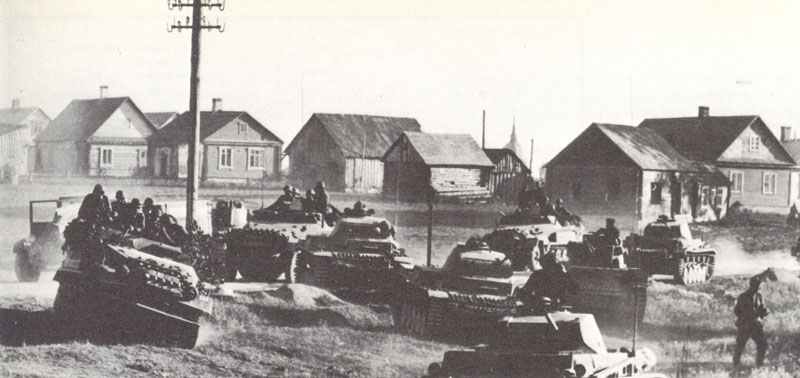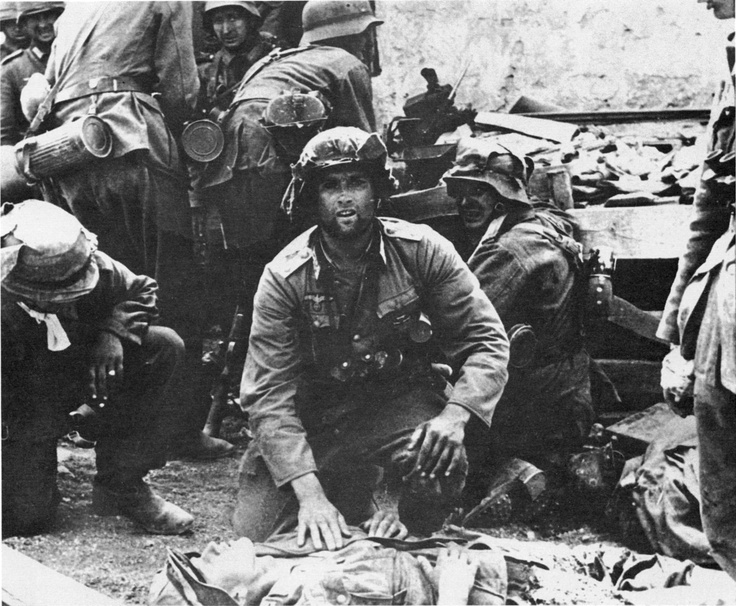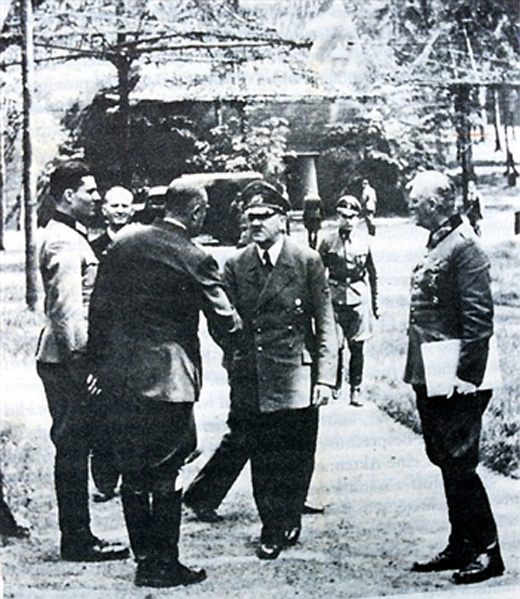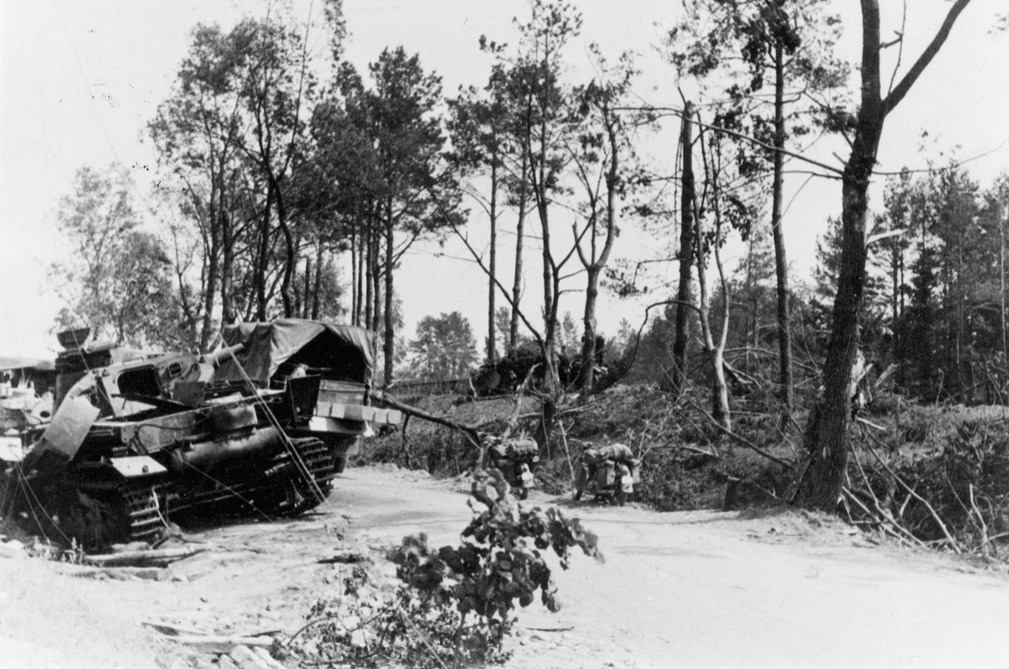Baltic Sea
- U-144 sinks the Soviet submarine M-78 9 miles west of Vindava with the loss of her entire crew of 16.
- The Soviet destroyer Gnevny sinks on a mine off Hango.
Battle of the Atlantic
- Beginning this day and lasting about a week, the largest convoy battle to date occurs around HX-133. 10 U-boats are concentrated to attack the convoy, which at first has 4 escorts. The escort group is later reinforced by 9 more ships from other onvoys (which, partly in consequence, lose 2 freighters) and in the ensuing battles HX-133 loses 5 ships. 2 U-boats are sunk. This ratio of losses would be favorable to the British in the long run if it could be repeated.
- The British steamer Hull Trader (717t) sinks on a mine west of Cromer with the loss of 11 of her crew.
- A German air attack claims the British steamer Trelissick (5265t) about 3 miles southeast of Sheringham Buoy, Cromer with the loss of 2 of her crew.
Diplomatic Relations
The puppet state of Slovakia declares war on the USSR.
[North Africa
Italian and German air raids on the fortress of Tobruk continue, but without appreciable effect.
Tobruk Under Air Raid |
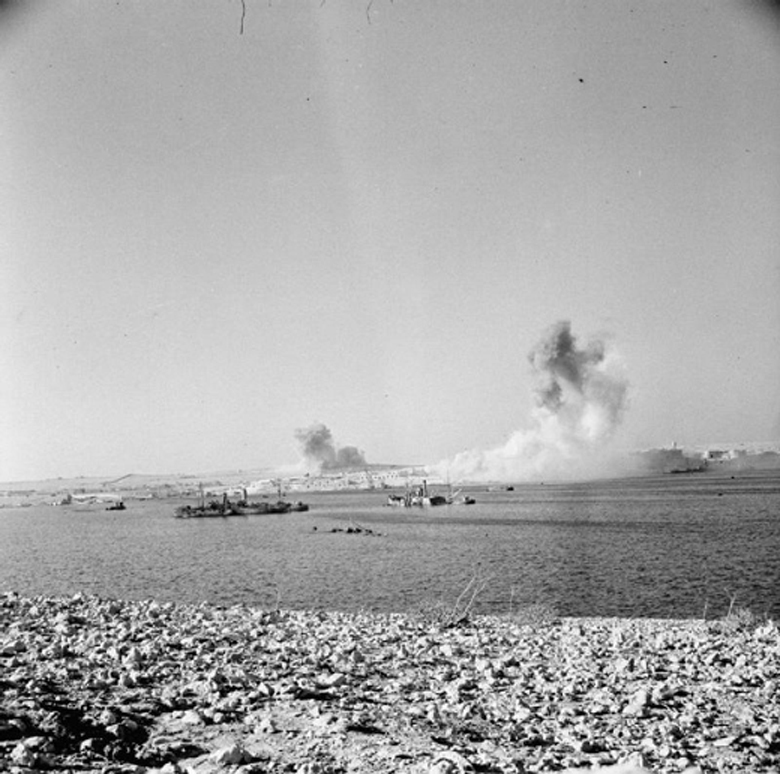 |
Soviet Union, Home Front
The Stavka(Shtab vierhovnogo komandovani - Headquarters of the Main Command) and Industrial Evacuation Group, tasked with relocating plants out of the range of the enemy, are formed in Moscow.
[Syria
The advance of the British force from Iraq reaches Palmyra but the Vichy garrison holds out.
[Eastern Front
The German attacks continue to make astonishing progress. The tank and motorized forces are already forging ahead. In the north the LVI Pzr Corps under Gen Manstein of the 4th Panzergruppe has advanced almost 50 miles. They cross the important Ariogala viaduct over the Dubysa River in Latvia. Hoth's forces, the LXII Pzr Corps under Gen Kuntzen and XXXIX Pzr Corps under Gen Schmidt, have captured Merech and Alyrus and have taken bridges over the Niemen after an advance of about 55 miles. In the central sector Guderian's tanks, the XXIV Pzr Corps under Gen von Schweppenburg and the XLVII Pzr Corps under Gen Lemelsen, have done slightly less well but have crossed the Bug River above and below Brest-Litovsk and consolidated at Kobrin and Pruzhani, 40 and 45 miles from the frontier. In the southern sector south of the Pripet River, von Kleist's 1st Pzr Group has made some ground also but there is a strong concentration of Russian troops, 56 divisions including 16 armored, on their front.
|
|
|
|
The Luftwaffe continues to batter the Red Air Force and disrupt the already exiguous Soviet communications. By noon on the 22nd 1,200 aircraft have been destroyed on the ground or in combat.
Chaos reigns in the headquarters of the Russian formations, not helped by directives from the general staff that reveal a complete ignorance of the facts of the situation, such as the on sent to the headquarters of the south-western front ordering the forces there to launch a major offensive and re-take Lublin, 30 miles behind the enemy lines, within 24 hours.
NORTHERN SECTORThe Soviet III Mechanized Corps launches a counterattack against the LVI Panzer Corps but only succeeds in losing 70 tanks. The panzers reach Kedainiai toward evening. An attack by the III and XII Mechanized Corps against the XLI Panzer Corps near Rasainiai is equally disastrous, with the panzrs and Luftwaffe taking a heavy toll of Soviet vehicles. Meanwhile, the infantry of the German 16th Army continues their march toward the Niemen unopposed.
CENTRAL SECTORThe German XXXIX and LVII Panzer Corps, heavily supported by the Luftwaffe, reach the Niemen while the VIII Corps captures Grodno. The Soviet 3rd and 8th Armies withdraw, creating a gap through which the panzers pour. Farther south, Heinz Guderian's 2nd Panzer Group advances toward Slutsk. Gen Pavlov, commander of the Western Front, orders up his reserve, the 13th Army, in an effort to stabilize the front.
SOUTHERN SECTORThe 11th Panzer Division captures Berestechko, splitting the Soviet 5th and 6th Armies. Kirponos orders an immediate attack by the IV, IX and XIX Mechanized Corps in an effort to slow the Germans.
RED ARMY COMMANDAs the frontier armies collapse, the Soviets begin organizing the rear. The Central Committee meets and creates the High Command Headquarters, the Stavka. Stalin is the head of the Stavka, which also includes marshals and heads of service. As part of the reorganization of the Soviet command system, the Industrial Evacuation Group is formed. They are tasked with the responsibility of moving any equipment of possible use to the Germans to the east out of range of the enemy. This group will be instrumental in the long-term survival and eventual victory of Soviet forces during the campaign in the east.[MORE]
[